Types of Coding-Decoding
Let’s us see all the different types of questions that we may encounter in this chapter.
Types of Coding-Decoding Questions
Type 1: Coding Based on Rearrangement of Letters
In this type of coding, some or all of the letters of the original word are rearranged in a particular manner to obtain the code.
Q. If in a coded language ‘BRINJAL’ is written as ‘LAJNIRB’, then how will ‘HEATER’ be written in that code?
(a) RTEAEH (b) RETAEH (c) RETAHE (d) REATEH
Explanation:
The deciphered pattern has been represented in the figures given below:

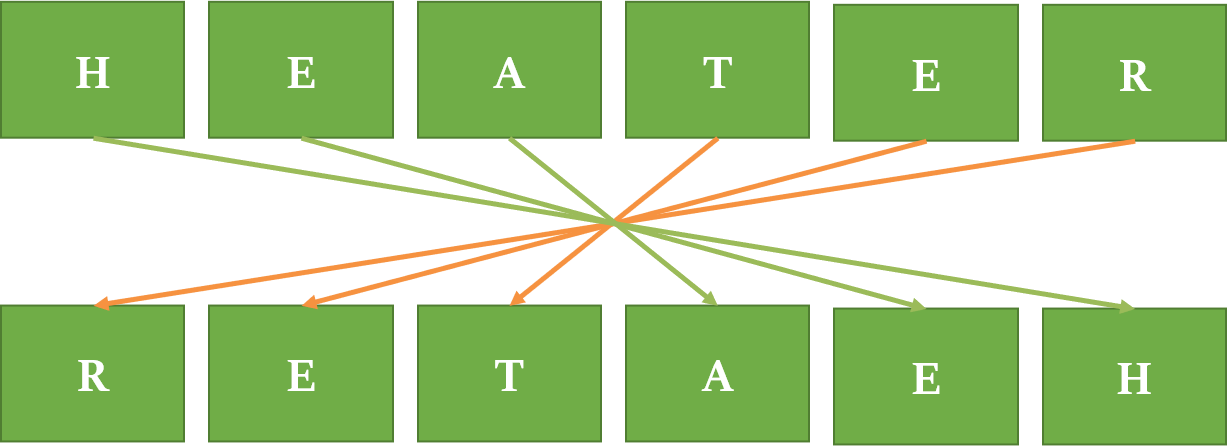
Answer: (b)
Type 2: Coding Based on Replacement of Letters
In this type of coding, the letters of the words are replaced (not just rearranged) by other letters following a certain pattern.
Broadly, you will encounter two types of Replacement Coding:
Forward Sequence Coding - In this type of coding, every letter of the word is coded in increasing order of English alphabet.
Backward Sequence Coding - In this type of coding, every letter of the word is coded in decreasing order of English alphabet.
Q. If in a certain code language ‘BLACK’ is written as ‘CMBDL’, then how will ‘BROWN’ be written in that code?
(a) CSPXO (b) CSRXO (c) ASRXO (d) CSPVO
Explanation:
The deciphered pattern has been represented in the figures given below:
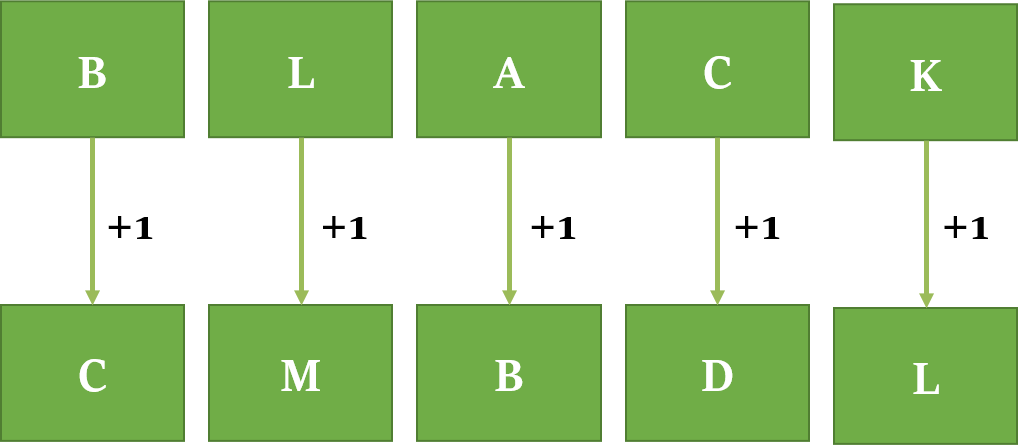
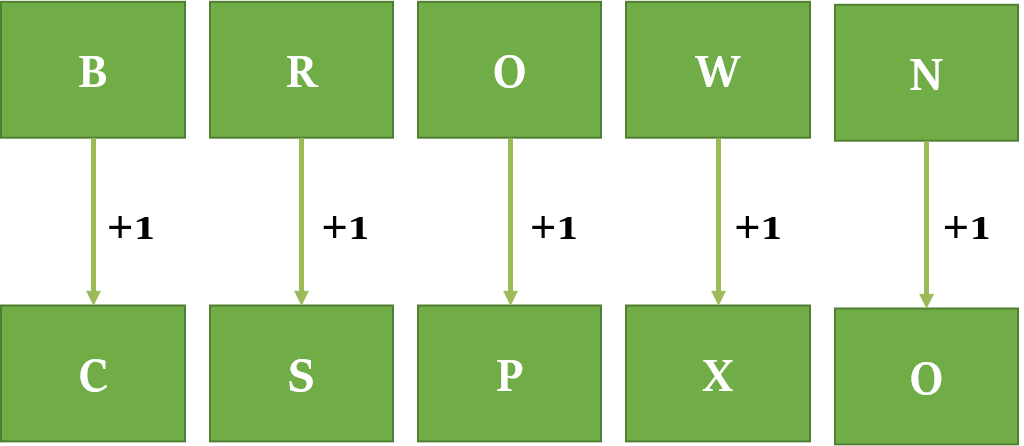
Answer: (a)
Type 3: Number and Symbol Coding
In this type of coding, numerical or symbolic code is assigned to the letters.
Q. In a certain code ‘COPE’ is written as 9&2# and ‘PRISM’ is written as 2@3$*, then how will ‘PIPE’ be written in that code?
(a) 373@ (b) 292& (c) &3&# (d) 232#
Explanation:
Here, every letter has been assigned a particular number/symbol. That is the code of that letter.
We got to this conclusion, as the common letter ‘P’ has the same code in both the given words, i.e. 2.
CONE: C - 9; O - &; P - 2; E - #
PRISM: P - 2; R - @; I - 3; S - $; M - *
So, code of PIPE will be: 232#
Answer: (d)
Q. If ALARM is written as 11211813, how is BIRD written in that code ?
(a) 29184 (b) 29194 (c) 18194 (d) 21822
(SSC Question)
Explanation:
Here, every letter has been assigned a particular number, which is the numeric position of that letter in the English alphabet.

ALARM: A - 1; L - 12; A - 1; R - 18; M - 13
So, code of BIRD will be: 29184
Answer: (a)
Q. If H = 8 and HAT = 29. Find how much BOX = ?
(a) 42 (b) 43 (c) 41 (d) 46
(SSC Question)
Explanation:
Here, every letter/word has been assigned a particular number, which is the numeric sum of the alphabetic positions of all the letters in that word.

H: Alphabetic position is 8
HAT: Sum of the alphabetic positions of all the letters = 8 (H) + 1 (A) + 20 (T) = 29
So, code of BOX will be: 2 + 15 + 24 = 41
Answer: (c)
Type 4: Mathematical Operations Based Coding
Such coding involves the use of equations and inequalities.
Q. If 9 x 5 x 2 = 529 and 4 x 7 x 2 = 724, then 3 x 9 x 8 =?
(a) 938 (b) 983 (c) 839 (d) 893
Explanation:
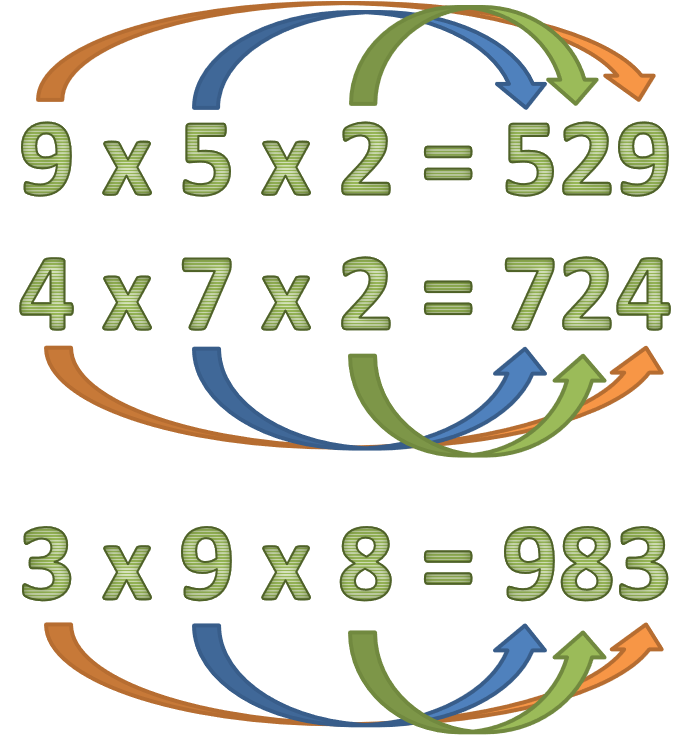
Answer: (b)
Type 5: Coding by Word Replacement
Under this pattern, a word is coded with another word, which in turn is coded with another word and so on.
There are two minute variations in this Question Type:
Case I:
In case of ‘called as’: Second word is the code for the first word.
E.g. Lion is called a Dog: It means Lion is coded as Dog.Case II:
In case of ‘means’: First word is the code for the second word.
E.g. Lion means Dog: It means Lion is the code for Dog.
Q. If orange is called as apple, apple is called as grape, grape is called as mango, mango is called as strawberry, strawberry is called as guava, which of the following is a yellow fruit ?
(a) Apple (b) Grape (c) Strawberry (d) Mango
Explanation:
Clearly, ‘mango’ is the yellow fruit but ‘mango’ is called ‘strawberry’.
So, ' strawberry’ is the code for yellow fruit.
Answer: (c)
Q. If ‘red’ means ‘green’, ‘green’ means ‘white’, ‘white ‘means’ ‘yellow’, ‘yellow’ is called ‘violet; then what is the colour of grass?
(a) White (b) Red (c) Violet (d) Blue
Explanation:
Colour of grass is ‘green’ but here ‘red’ means ‘green’ and hence according to the given information colour of grass must be coded as ‘red’.
Answer: (b)
Type 6: Fictitious Language Coding
In this type of questions, group of codes (words, letters, numbers, symbols etc) is assigned to group of words.
Q. In a certain code language ‘she is tall’ is written as ‘om po jo’ and ‘is he dumb’ is written as ‘ot om do’. Find the code for ‘is’.
(a) ot (b) po (c) om (d) do
Explanation:
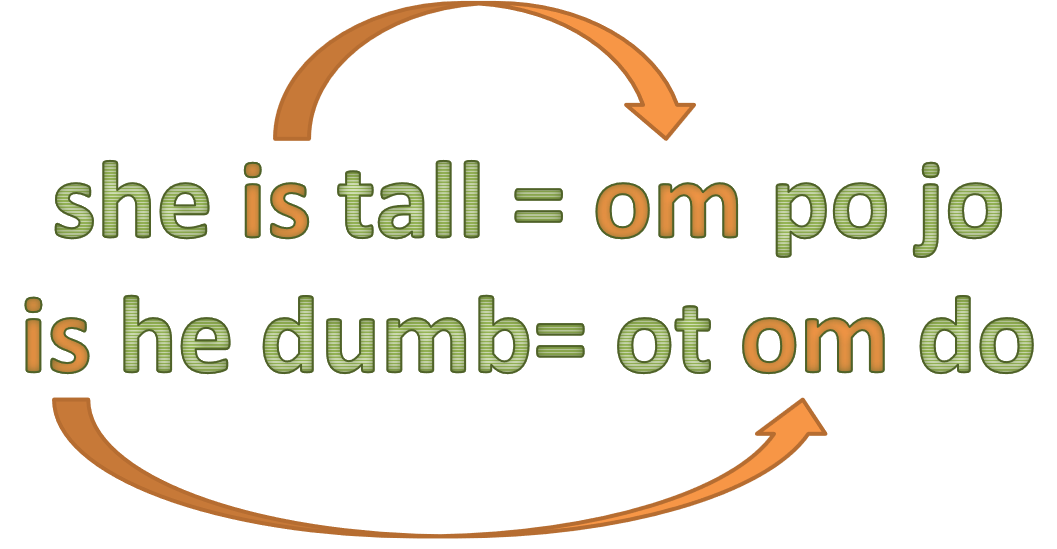
Clearly, code for ‘is’ = ka
code for ‘she’ and ‘tall’ = po or jo
code for ‘he’ or ‘dumb’ = ot or do
Answer: (c)
Type 7: Conditional Coding
Here, codes of letters/numbers are given right under them (generally in a two row table). Apart from this, some conditions may also be given.
Candidates are required to find out code for a particular word/number according to the given conditions.
Q. Find out which of the combinations correctly represents the group of letters based on the following coding system and the conditions that follow.

Conditions:
(i) If both first and last letters are vowels, their codes are to be interchanged.
(ii) If the first letter is a consonant and the last letter is a vowel, both are to be coded as the code for the consonant.
Find the code for ‘BHMI’.
(a) 9#$! (b) 91!$ (c) 81$% (d) 91!9
Explanation:
BHMI → First letter (i.e. B) is a consonant and the last letter (i.e. I) is a vowel. So, Condition (ii) will apply.
Code of BHMI without applying any condition: 91!$
Code of BHMI without applying Condition (ii): 91!9
Answer: (d)
Type 8: Matrix Coding
In such questions, two matrices are given, each having letters/numbers.
The columns and rows of Matrix I are numbered from 0 to 4 / (A to E) and those of Matrix II from 5 to 9 / (F to J).
Each letter/number in these matrices can be represented by two digits:
- first digit is the row number and
- second digit is the column number.
Q. Consider the following two matrices. In each matrix a letter is represented first by its row and next by its column, e.g. ‘A’ can be represented by 01, 22 etc, and M can be represented by 68, 79 etc. Similarly, you have to identify the set for the word PEARL.
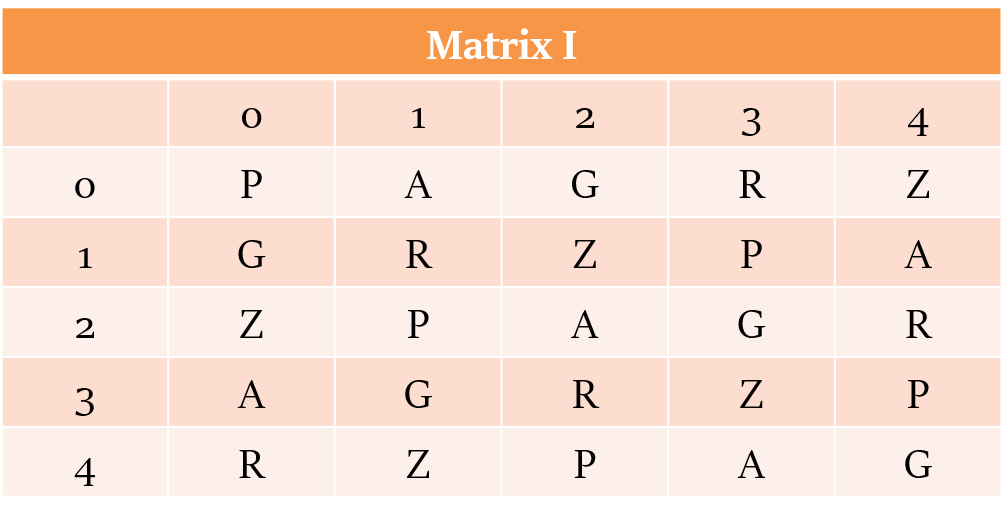
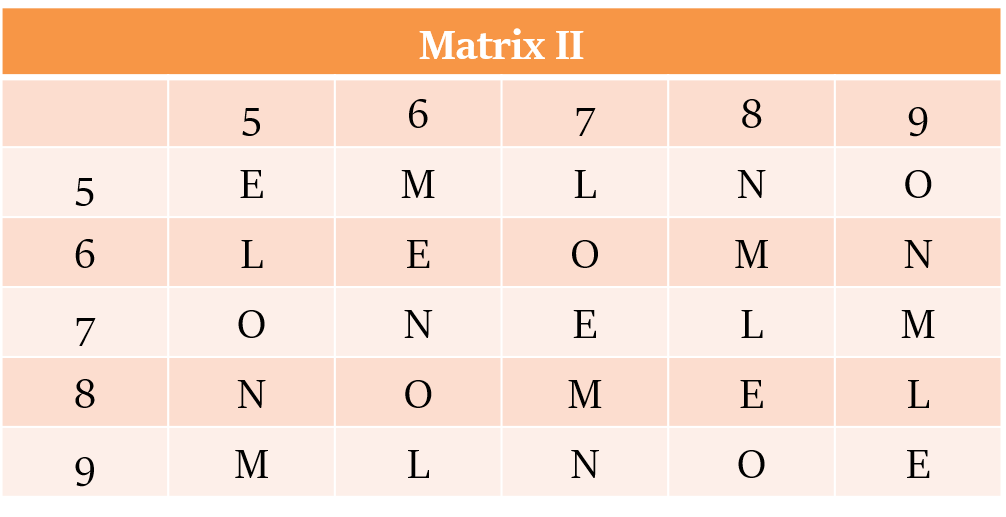
(a) 00,55,22,11,96 (b) 13,77,30,14,88 (c) 12,88,43,32,89 (d) 00,66,14,32,56
(SSC Question)
Explanation:
It’s better to solve such questions via options. That is, we will use Elimination Method.
Option (b): 13, 77, 30, 14, 88 → PEA AE (incorrect)
Option (c): 12, 88, 43, 32, 89 → ZEARL (incorrect)
Option (d): 00, 66, 14, 32, 56 → PEAR M (incorrect)
Option (a): 00, 55, 22, 11, 96 → PEARL (correct)
Answer: (a)